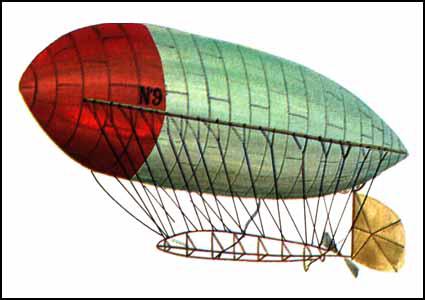Airships
Henri Gifford launched an airship in Paris on 24th September, 1852. His balloon, powered by a 3-hp steam engine, covered 16 miles (27 km) at a speed of 5 mph (9 kph).
By the end of the 19th century, the Brazilian, Alberto Santos-Dumont, was acknowledged as the leading designer of airships. Airship production was also being encouraged by the German military authorities and in 1900 Ferdinand Zeppelin produced his Zeppelin LZ. His airship weighed 12 tons and contained 400,000 cubic feet of hydrogen, was driven by propellers connected by two 15-hp Daimler engines.

By the outbreak of the First World War both the Royal Flying Corps and the French Army Air Service had airships whereas the German government owned seven produced by Ferdinand Zeppelin. In the war Zeppelins were used for air rids on Britain and France. However, being large and slow, they were an easy target and by the summer of 1917 the German military had decided to employ them for transporting supplies.
The airships owned by Britain and France were occasionally employed on army observation duties. They were also successfully used to look out for submarines during convoy operations.
